Proxmox VE 9 Installation Guide - Step by Step
- Last updated: Sep 10, 2025

I've been using VMware ESXi for many years. For me, it was long considered the best choice for bare-metal virtualization. I appreciated its lightweight interface, powerful features, and even its flexible licensing, which made it easy to use in test environments. Back then, there were no subscription-only licenses — in short, everything you’d expect from professional-grade software. But that was before Broadcom took over.
I won't rehash the story, but basically, it stinks to high heaven, and it's only getting worse. So I decided to move on to another solution, and that's what I'm going to detail in a series of tutorials dedicated to Proxmox.
I chose Proxmox VE for several reasons: it’s free (with the option of a paid subscription for official support and more stable updates, which also helps support the project), open-source, extremely powerful, highly flexible, and — last but not least — not controlled by Broadcom. Of course, as with any migration or platform change, it’s important to compare the features you’ll gain or lose before making the move. While Proxmox VE meets all my needs, I’m aware it still doesn’t match VMware in every area.
This first tutorial — starting right from the basics — will focus on installing Proxmox VE 9.
Download the ISO
The first step is to visit the official Proxmox download page: https://www.proxmox.com/en/downloads and download the latest Proxmox VE 9 ISO Installer.
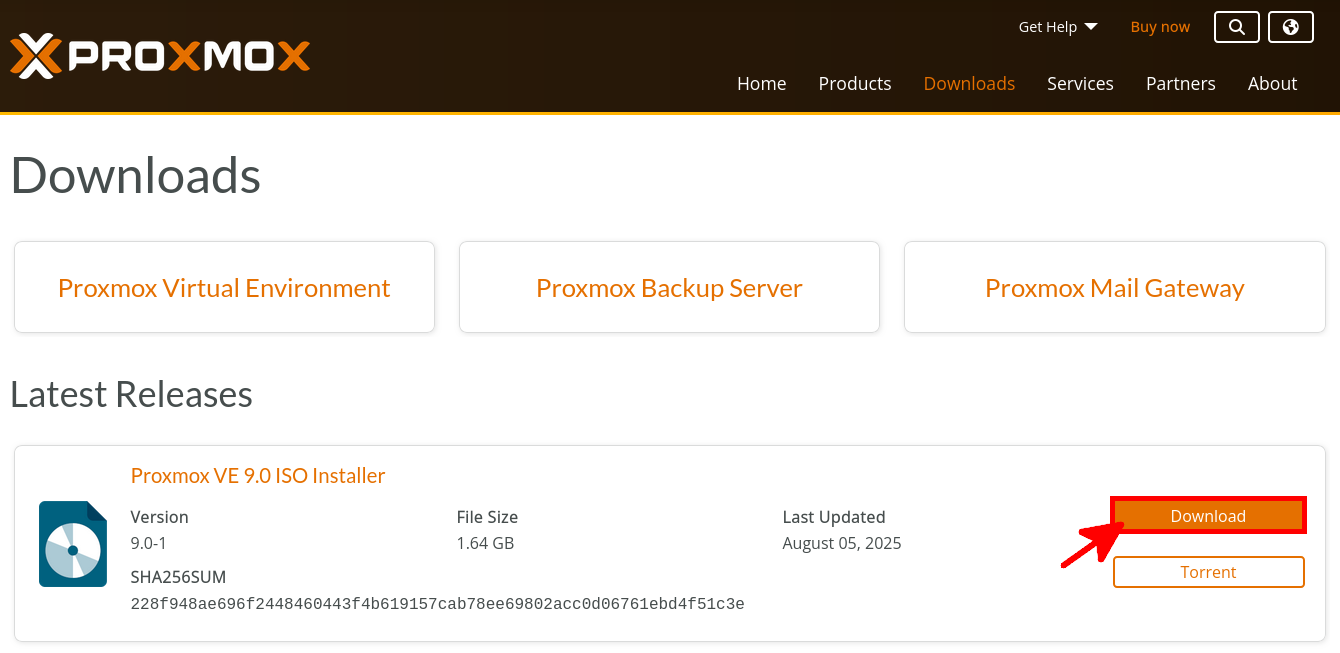
Next, prepare your installation media: you can burn a CD (yes, some still do), use a USB tool like Rufus, create a bootable drive with dd on Unix-like systems, or mount the ISO directly via a remote management tool such as iDRAC Enterprise Manager if installing on a Dell server (my case!). You can find more examples of media preparation in the official Proxmox wiki: https://pve.proxmox.com/wiki/Prepare_Installation_Media.
Architecture overview
The network
In this example, the server is equipped with two physical network interfaces. After installing Proxmox VE 9, the system assigns them names following the systemd predictable network interface naming convention (see: https://pve.proxmox.com/wiki/Network_Configuration).
- Here, Proxmox has assigned the names
eno1andeno2to my two interfaces:
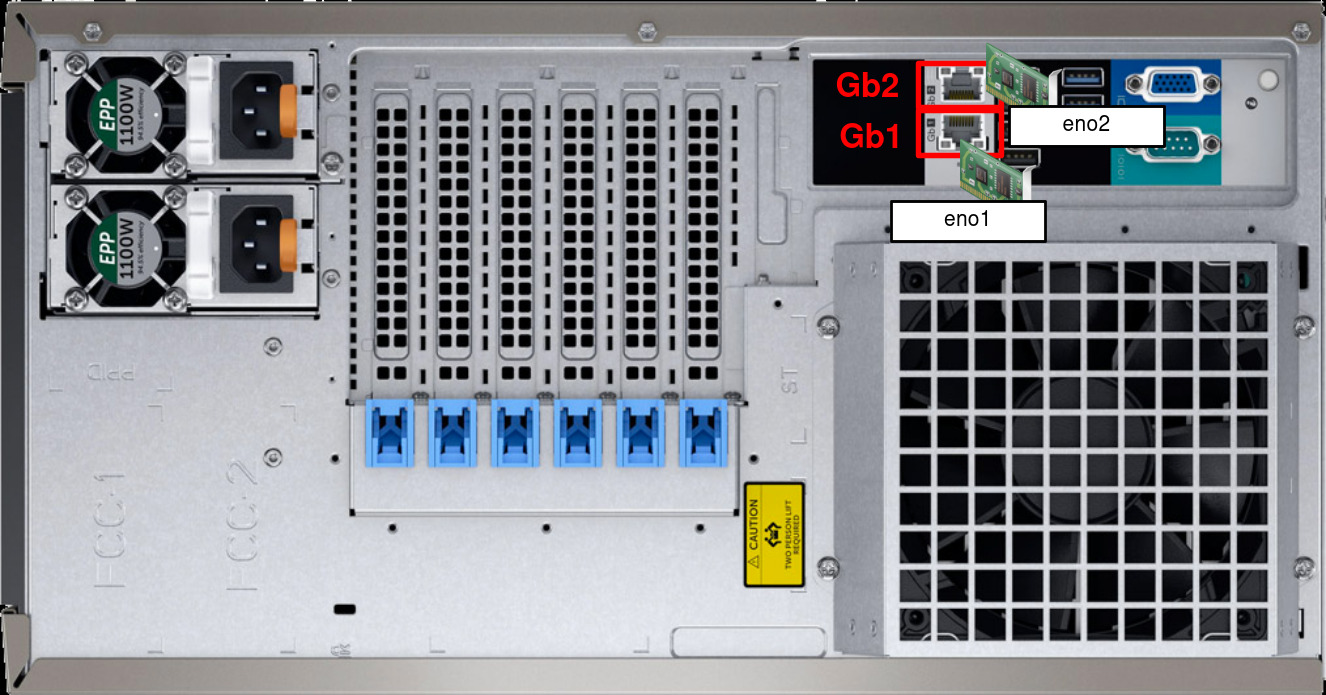
- Since my server has two physical network interfaces, I’ve chosen to dedicate one to the management interface and the other to the virtual machine network. This approach helps to isolate administrative traffic from VM traffic, improving both security and performance. Of course, it’s also possible to use a single interface for both management and VM networking, depending on your needs:
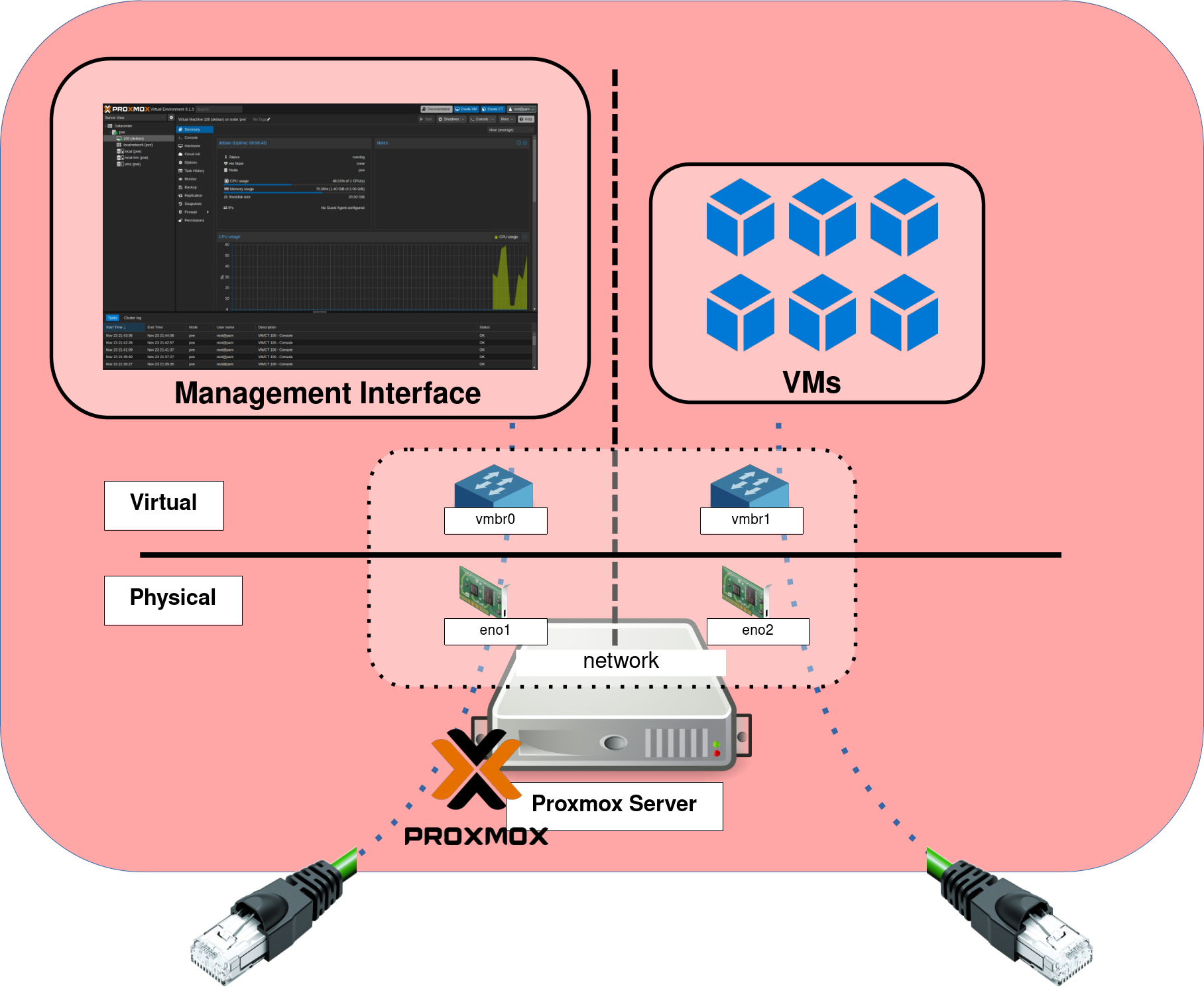
- This diagram provides another perspective: each virtual machine is connected to the
vmbr1virtual bridge, which handles VM traffic, while the management interface is linked to thevmbr0virtual bridge dedicated to administrative access:
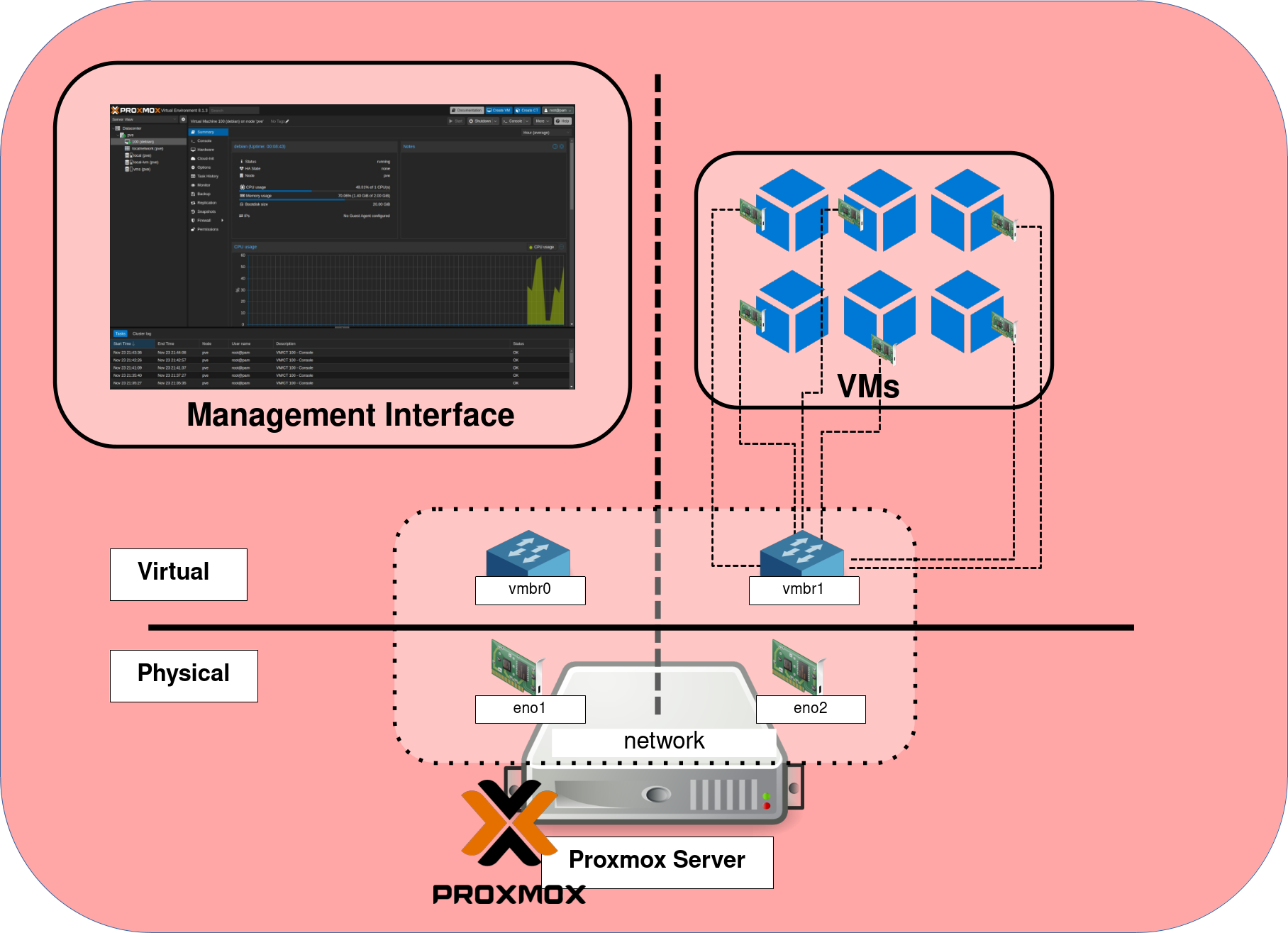
Storage
For my storage setup, I wanted to use ZFS, so I configured my Dell PERC controller (a hardware RAID card) in HBA mode. This allows the Proxmox VE 9 installer to access the disks directly, which is essential for getting the best performance and reliability out of the ZFS filesystem.
During installation, I created a ZFS RAID1 (mirror) for the system drive, where the Proxmox hypervisor is installed. I then configured my four remaining disks as a ZFS RAID10 array, dedicated to storing virtual machines.
It’s important to understand that the best way to use ZFS is with an HBA (Host Bus Adapter) rather than a hardware RAID setup. ZFS needs direct access to the physical disks to manage redundancy, caching, and error correction. You can read more in the official documentation: https://pve.proxmox.com/wiki/ZFS_on_Linux.
If you have a Dell PERC card and want to use ZFS, you should consider switching from RAID mode to HBA mode. Dell provides a guide on how to do this here: Dell: Convert RAID Mode to HBA Mode.
- Example: switching a Dell PERC RAID controller from RAID mode to HBA mode to prepare disks for ZFS installation in Proxmox VE 9:
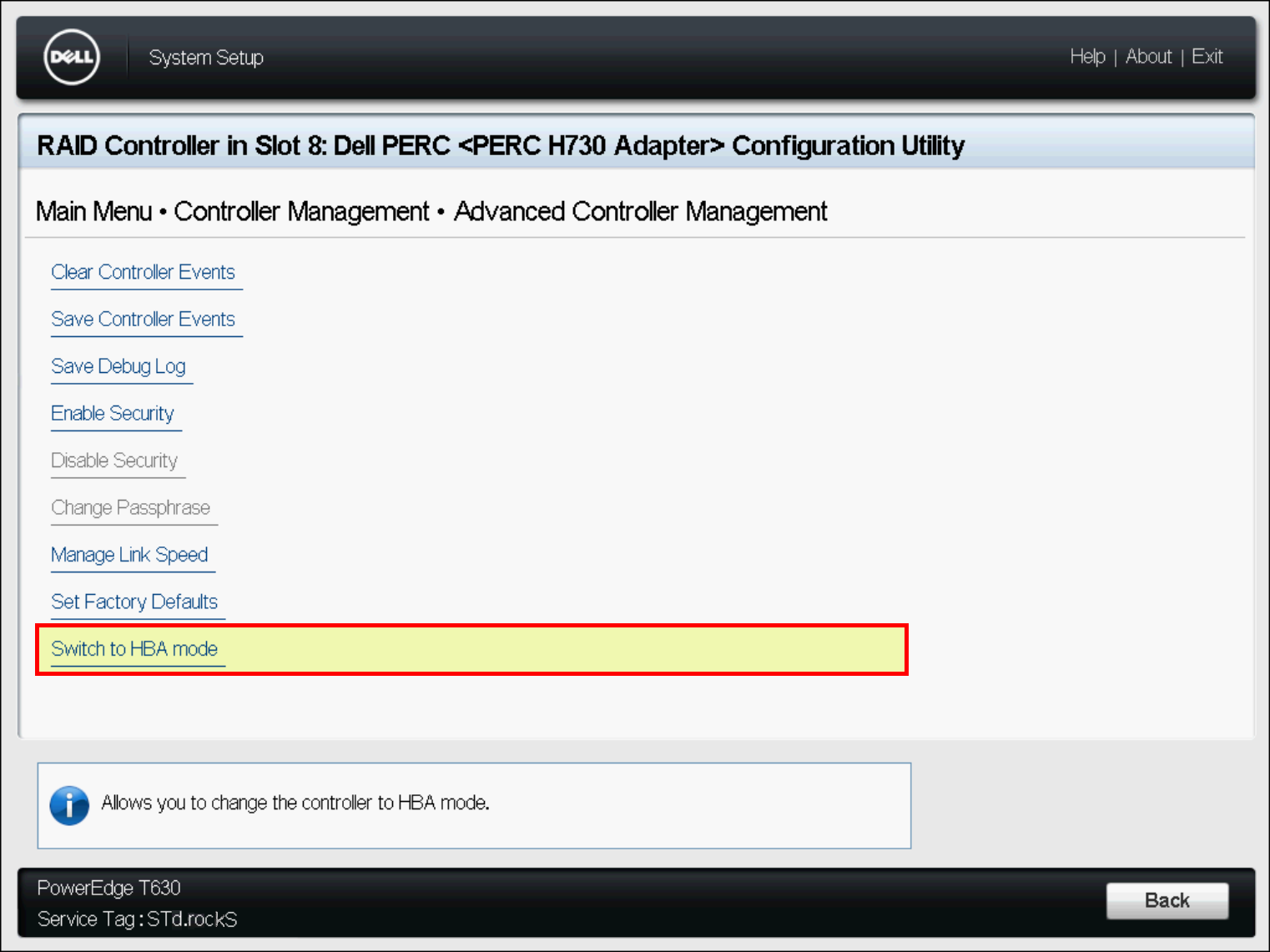
- Example of ZFS storage organization in a Proxmox VE 9 architecture:
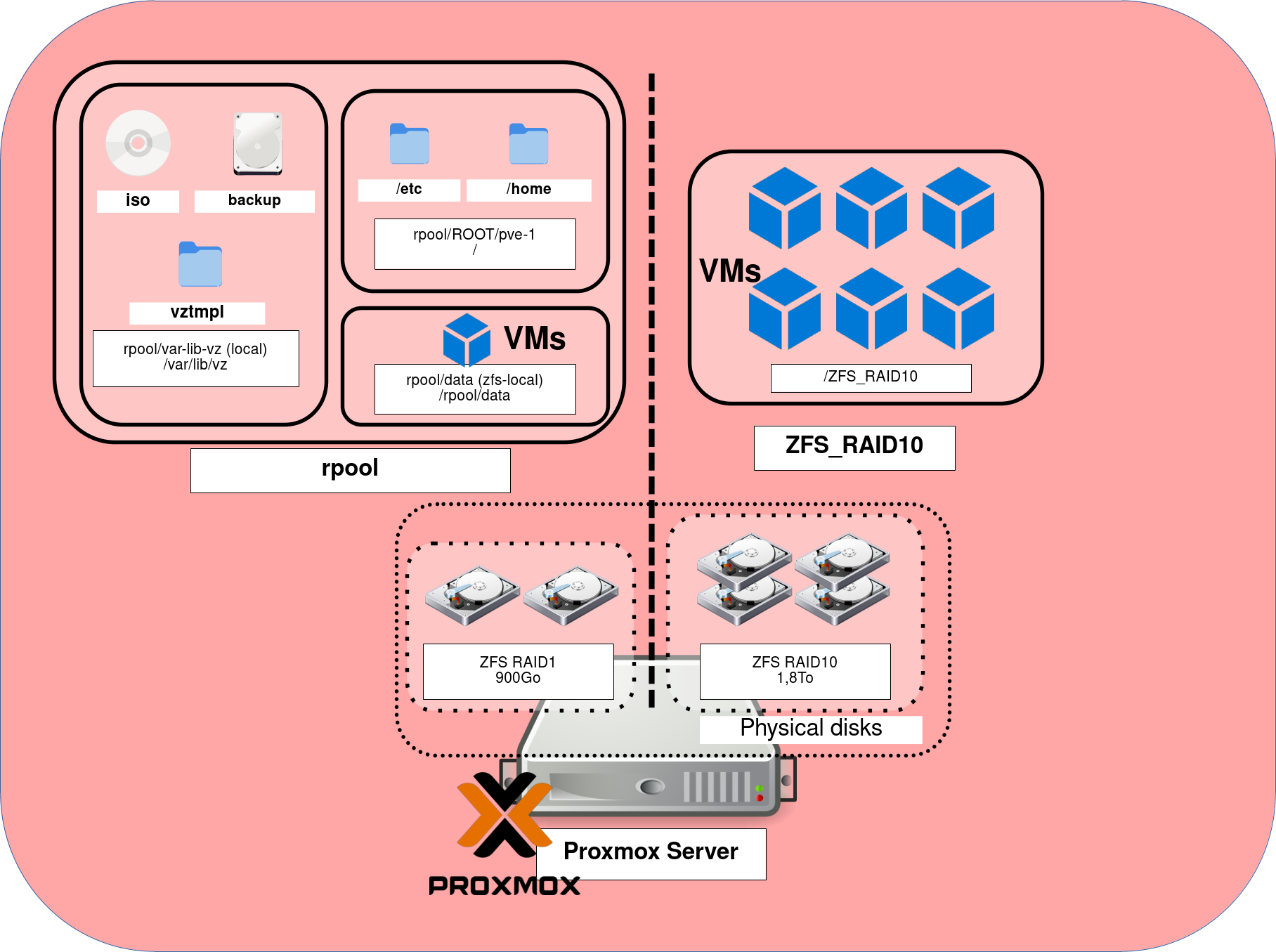
Installing Proxmox VE 9
Let’s move on to the installation process. With Proxmox VE 9, the setup remains straightforward, but it includes a few interface and option updates compared to earlier versions.
- Boot from your prepared installation media. The Proxmox VE welcome menu should appear — select Install Proxmox VE (Graphical) to launch the guided setup:
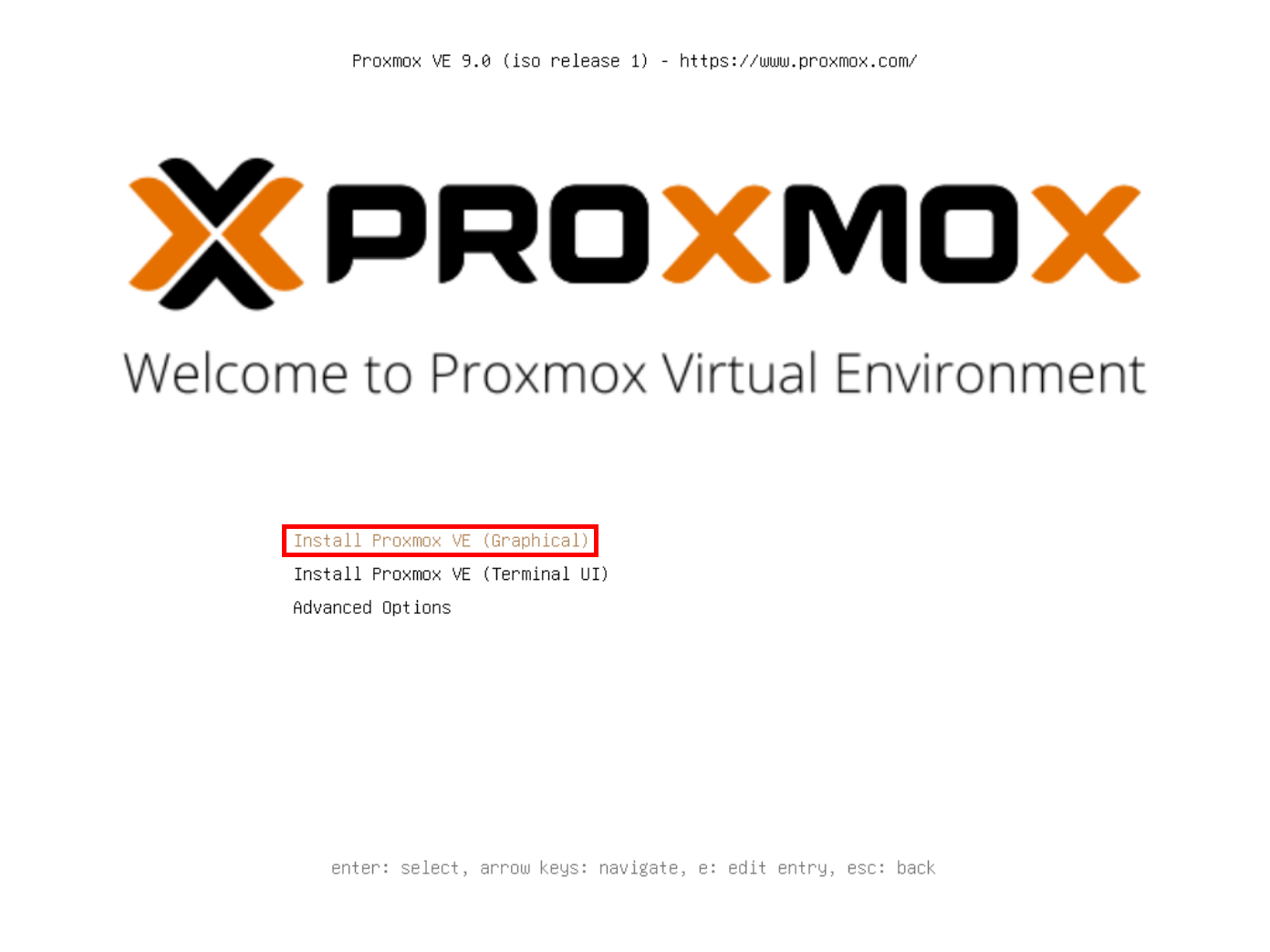
- Accept the End User License Agreement (EULA) by clicking on I Agree to proceed with the installation:
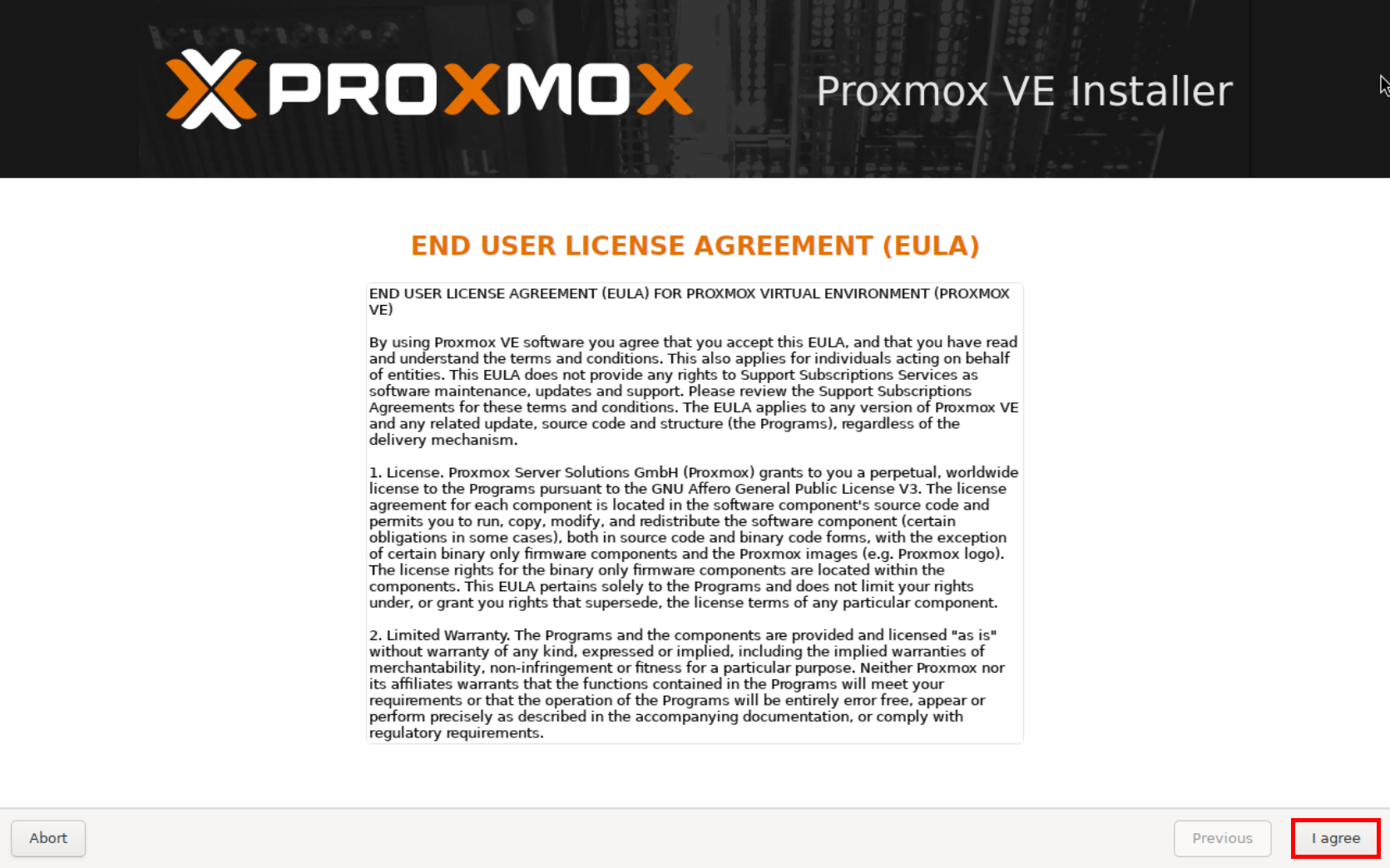
- At the target disk selection step, click on Options to configure a ZFS RAID1 (mirror) for the system installation:
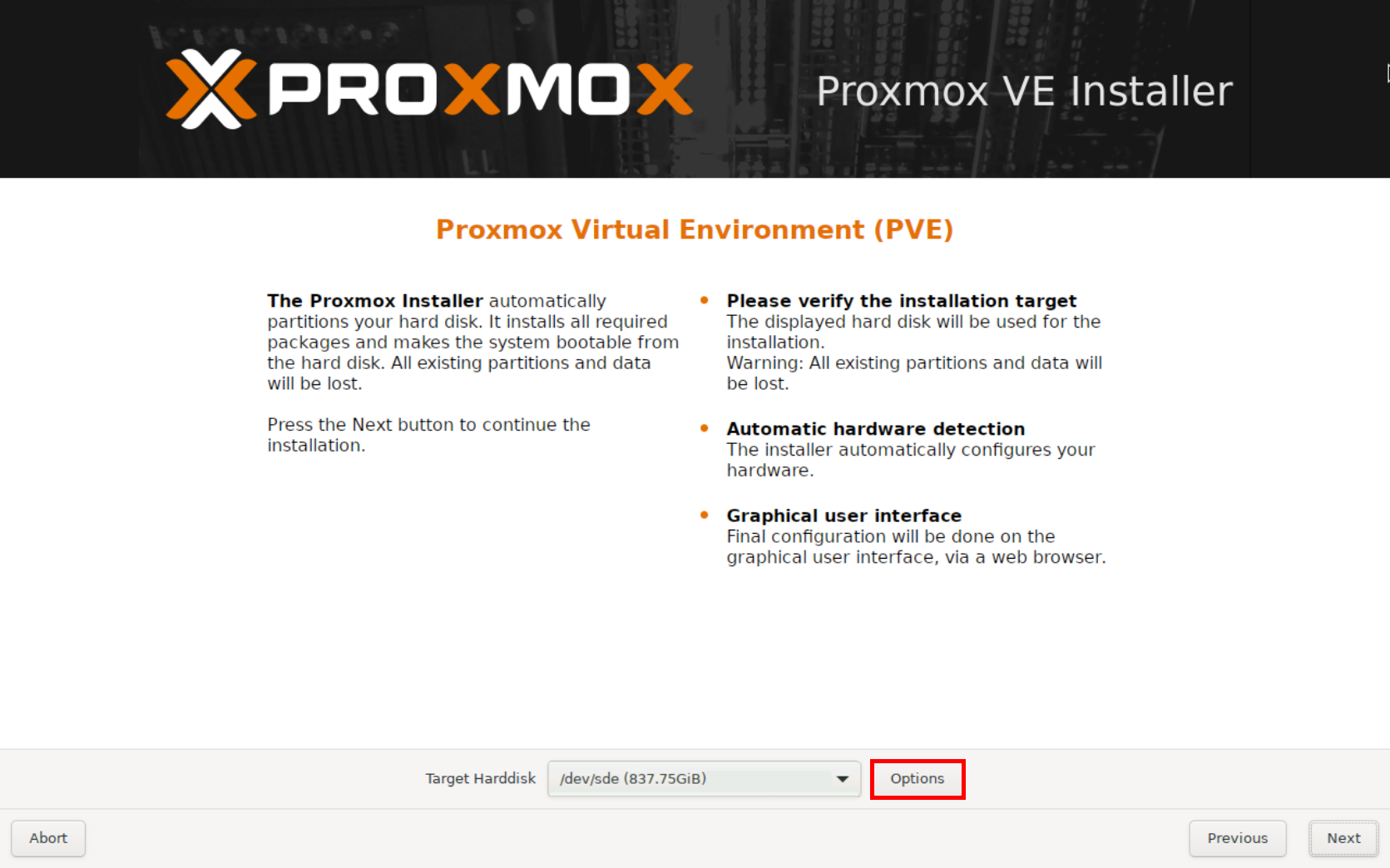
- In the Hard Disk Options window, select ZFS (RAID1) and choose the two disks that will host the Proxmox VE 9 hypervisor. For the remaining disks, set them to Do not use so they can be configured later for VM storage:
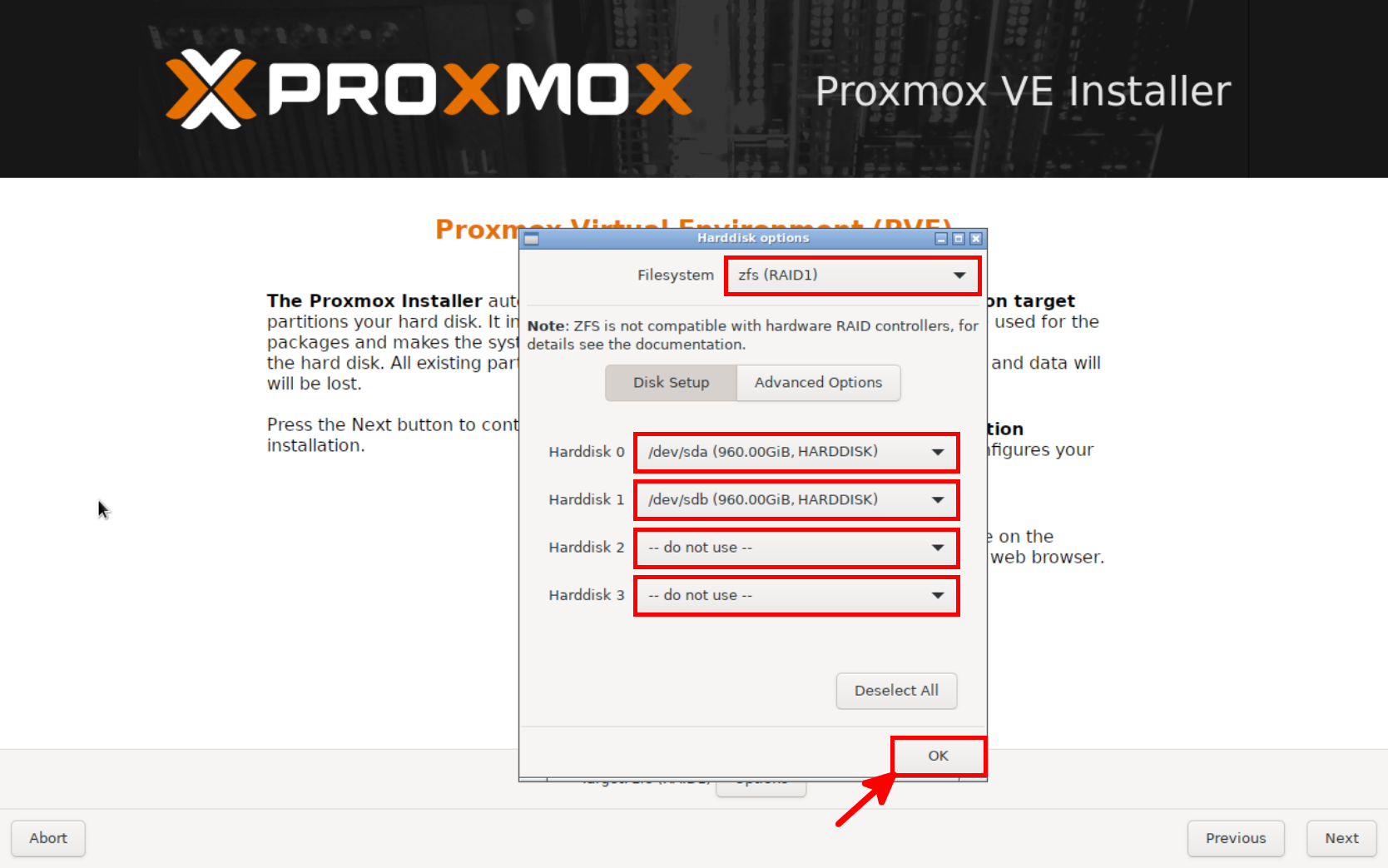
- Select your time zone and preferred keyboard layout to match your location and language settings:
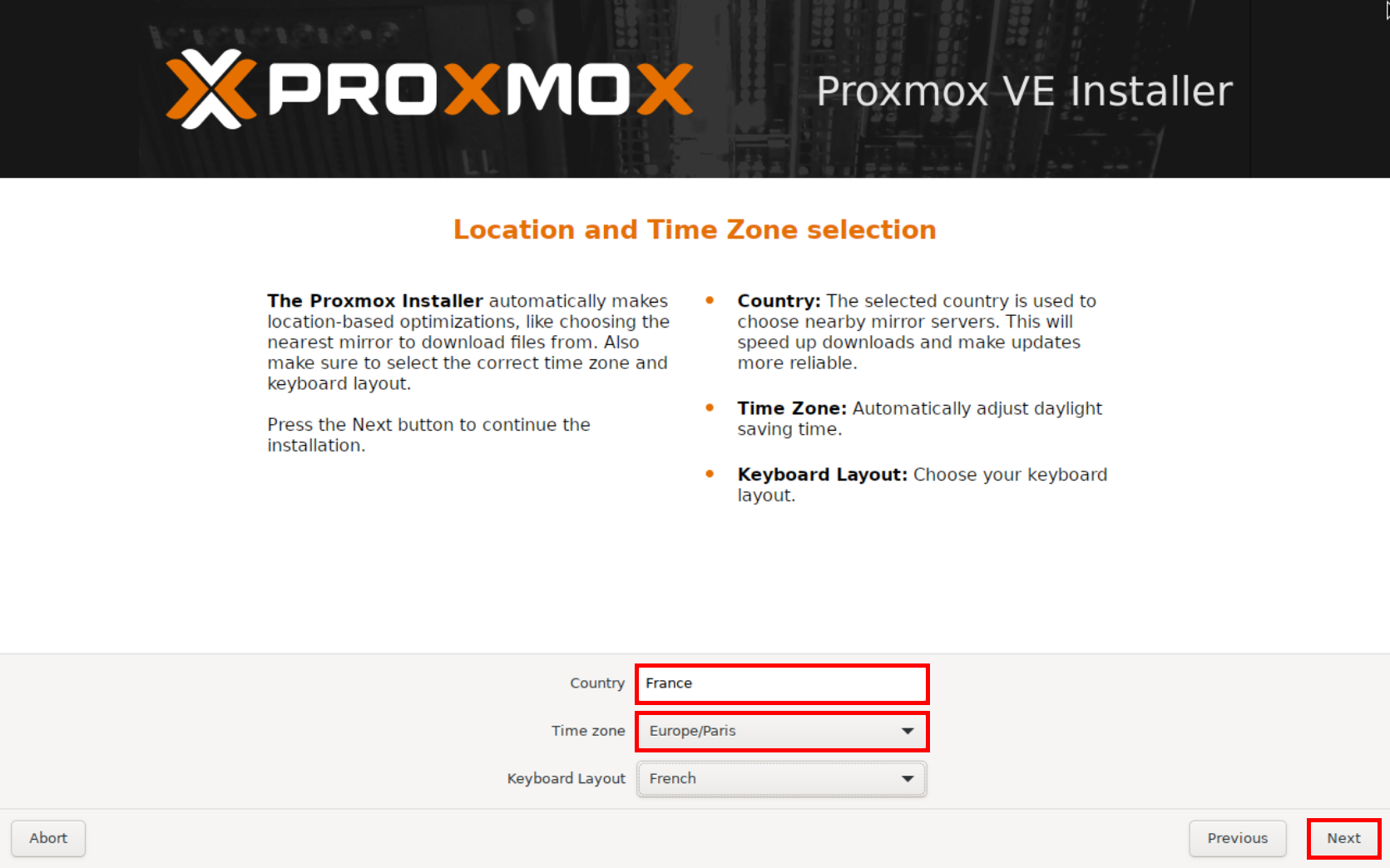
- Set a strong password for the
rootuser and provide an email address for administrative notifications:
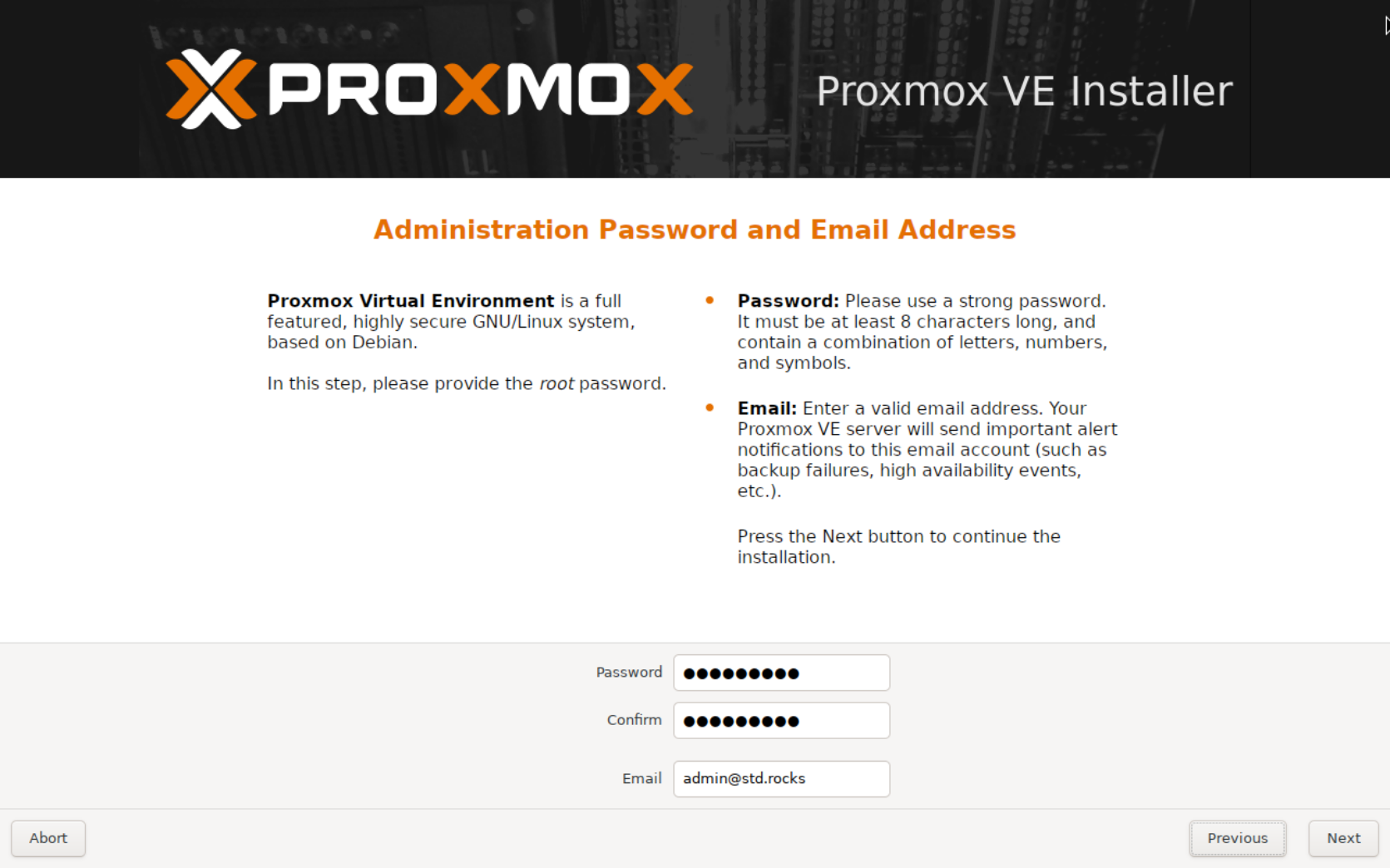
- Select the physical network interface and configure the IP settings you want to assign to the management interface:
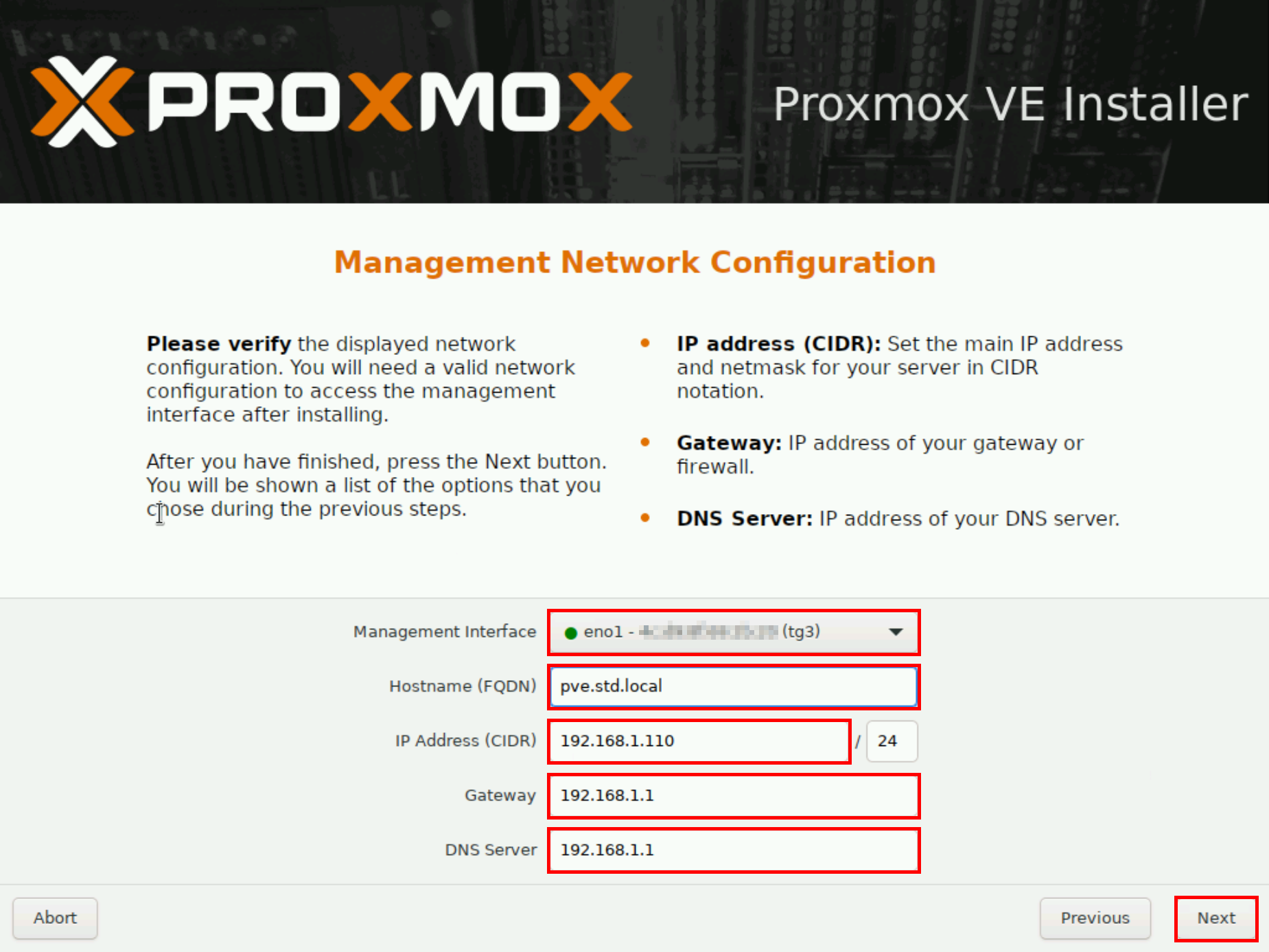
- Review the summary information displayed, then click Install to start the Proxmox VE 9 installation. Once the process is complete, the system will automatically reboot:
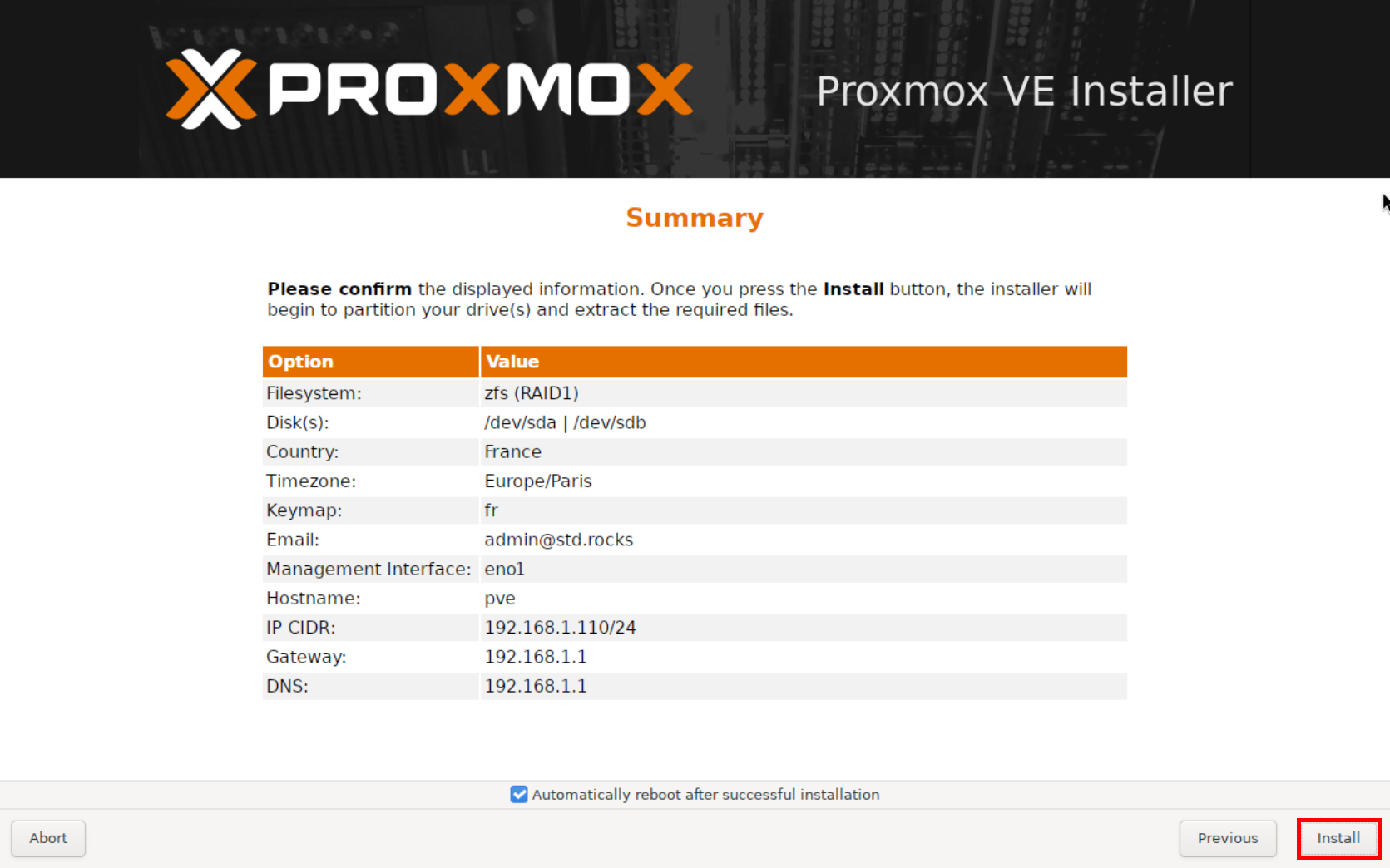
- Once restarted, Proxmox will prompt you to connect to the web interface on the address you defined earlier and on port
8006:
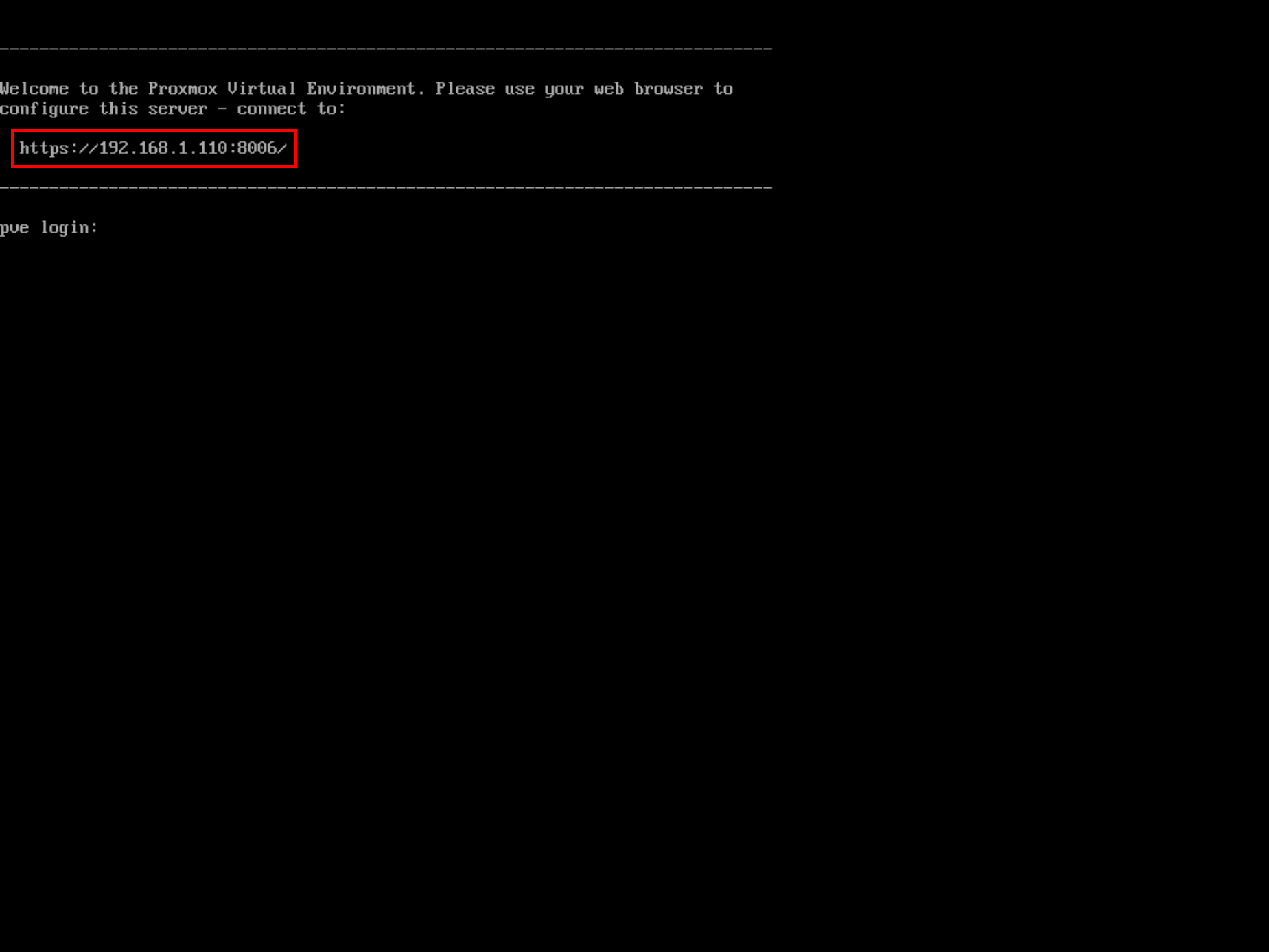
Connecting to the Web Interface
- Open a web browser and navigate to the Proxmox administration interface using the address you defined during installation (remember to use
https://and port8006). The browser may display a warning about a self-signed certificate — this is normal for a fresh installation. On the login screen, select Linux PAM as the authentication method and log in with therootaccount and the password you set earlier:
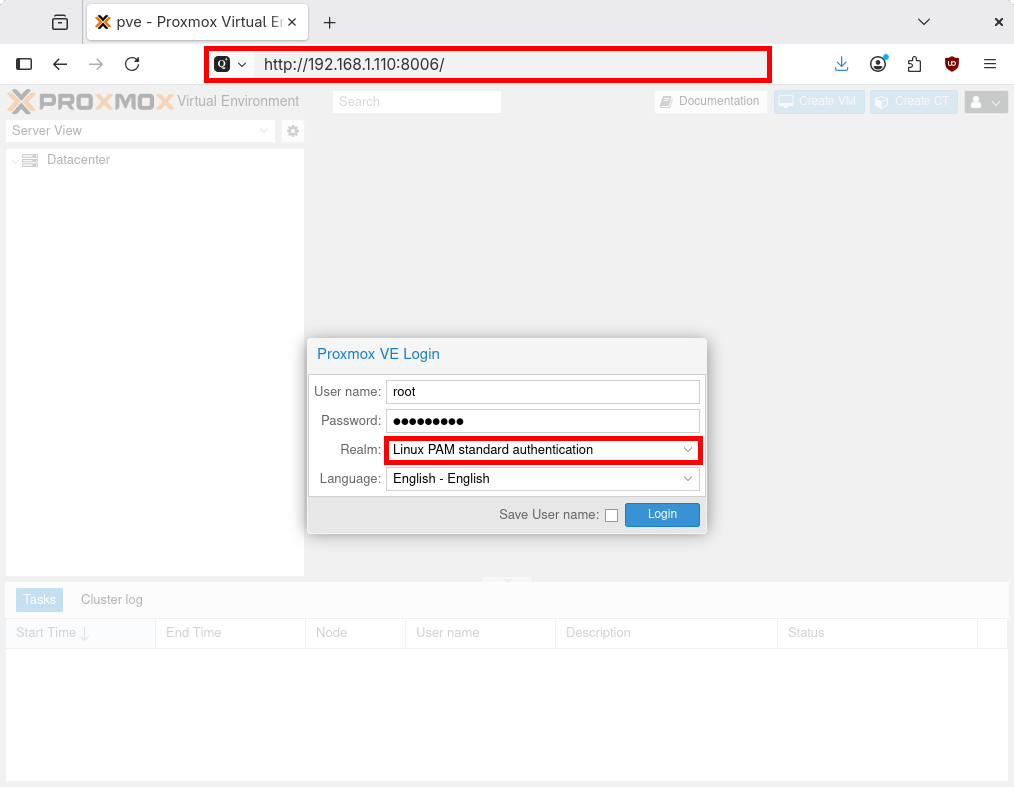
Post Installation
Add the No-Subscription Repository
If, like me, you don't have a subscription, you may want to disable the enterprise repositories (which require a valid license) and enable the no-subscription repositories instead.
- In the APT Repositories menu, select each of the two Enterprise Repository entries and click the Disable button:
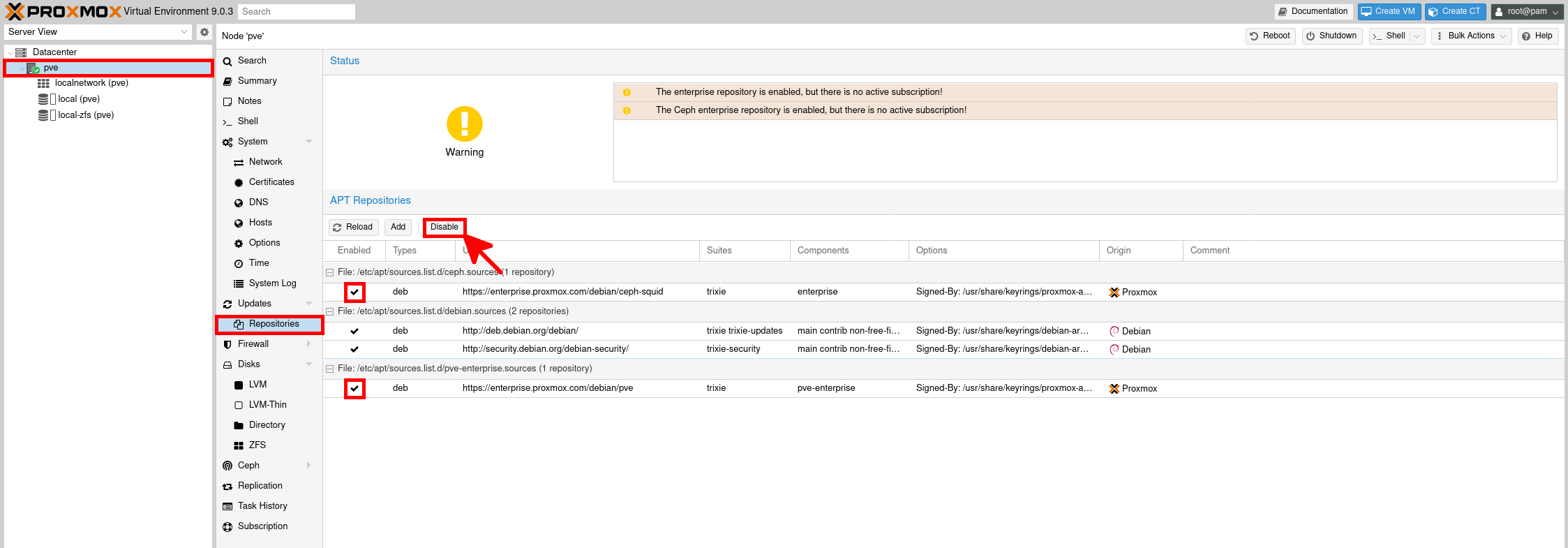
- Click the Add button to add a new repository:
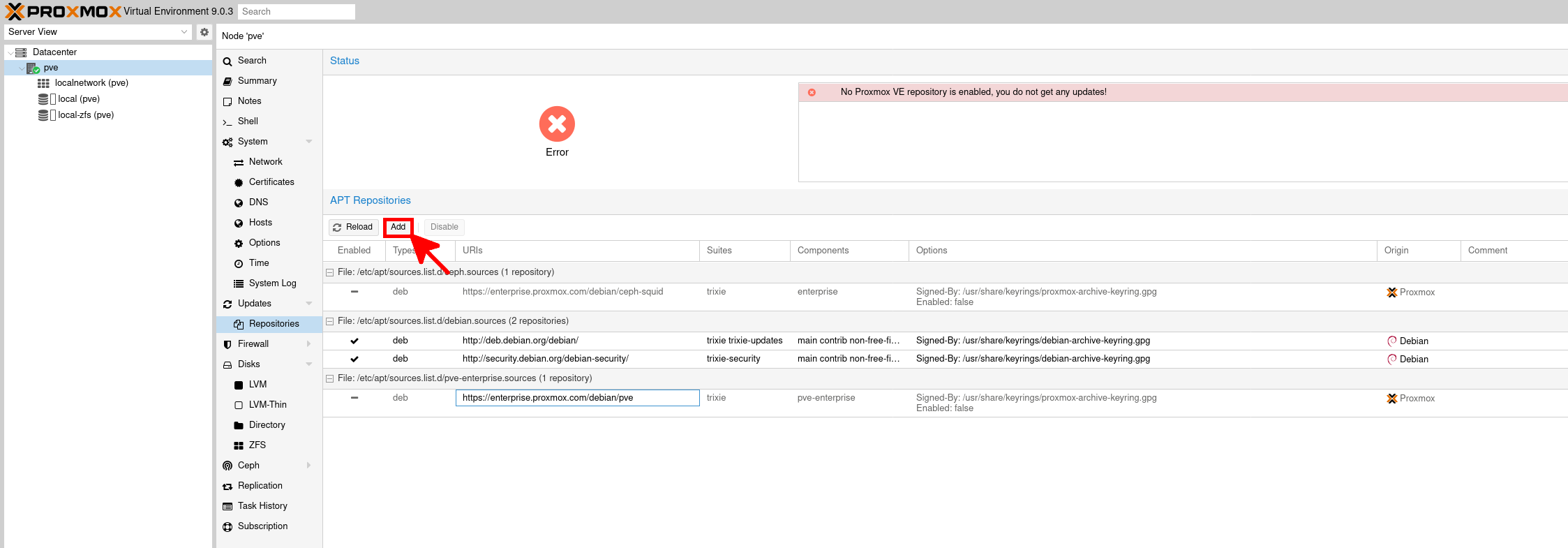
- Select No-Subscription and click Add:
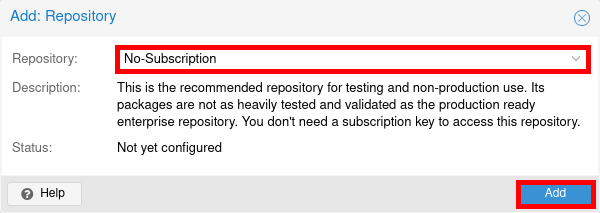
- Go to the Shell menu and run an upgrade with the
apt update && apt full-upgradecommand:
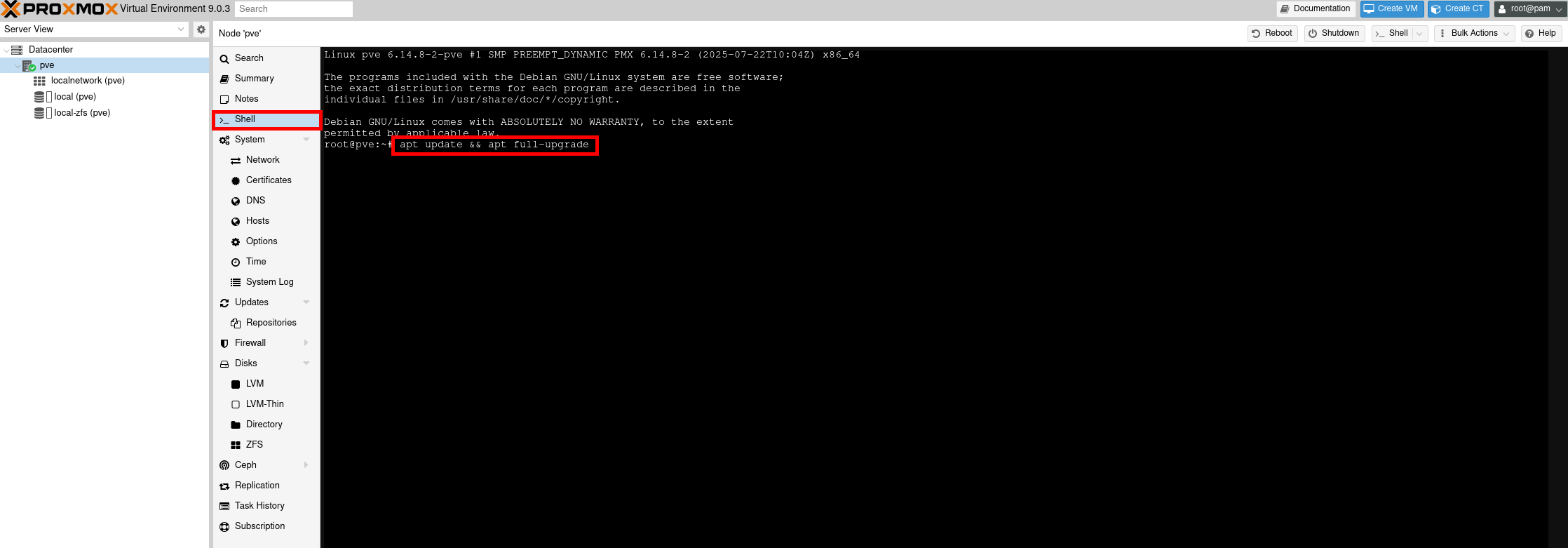
Add ZFS Storage
- Go to the ZFS menu and click Create: ZFS:
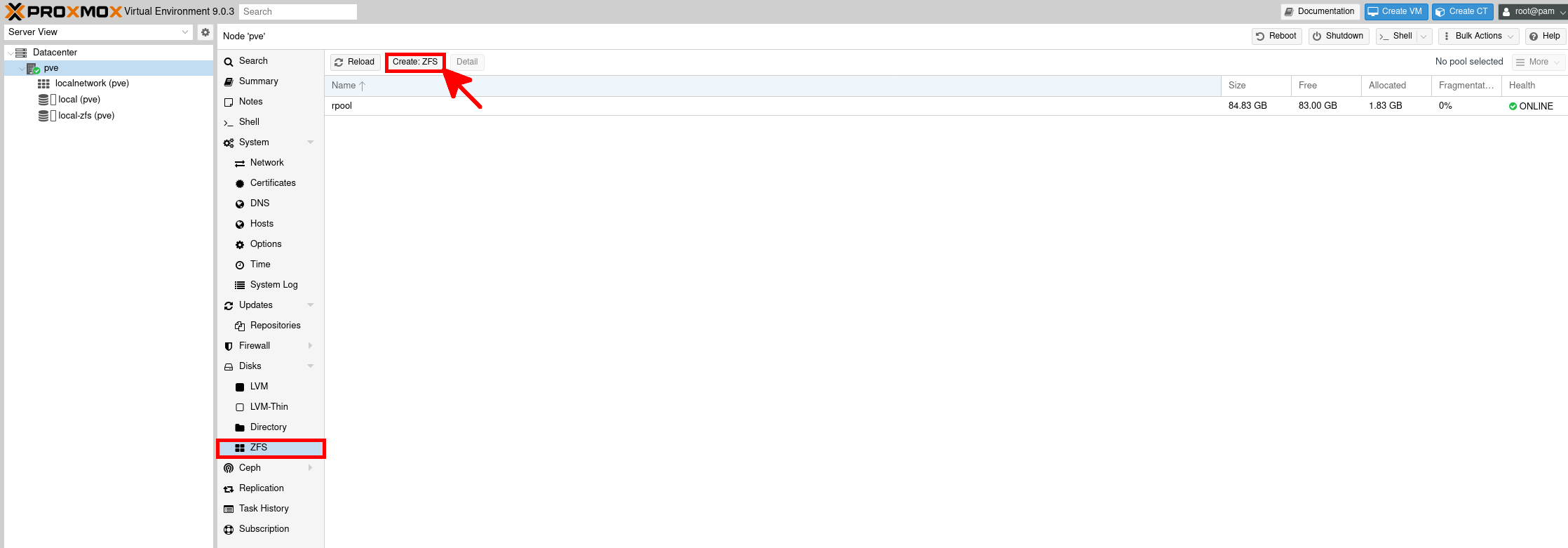
- Select the disks you want to include, give the storage a name, choose the RAID level, and click Create:
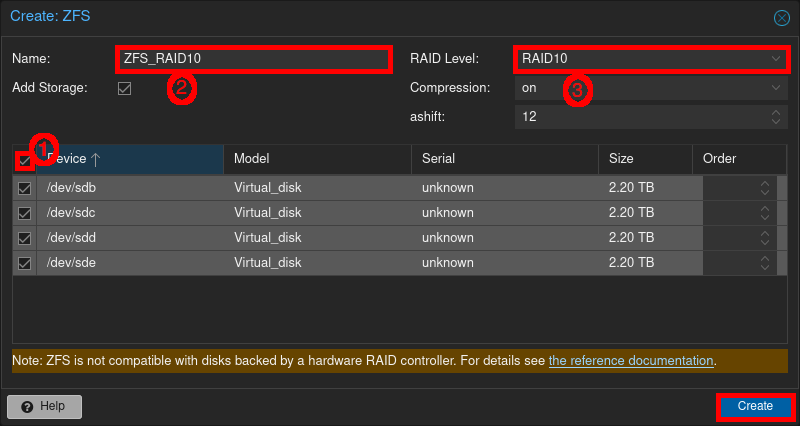
Add VMs Bridge
- Go to the Network menu and click Create:
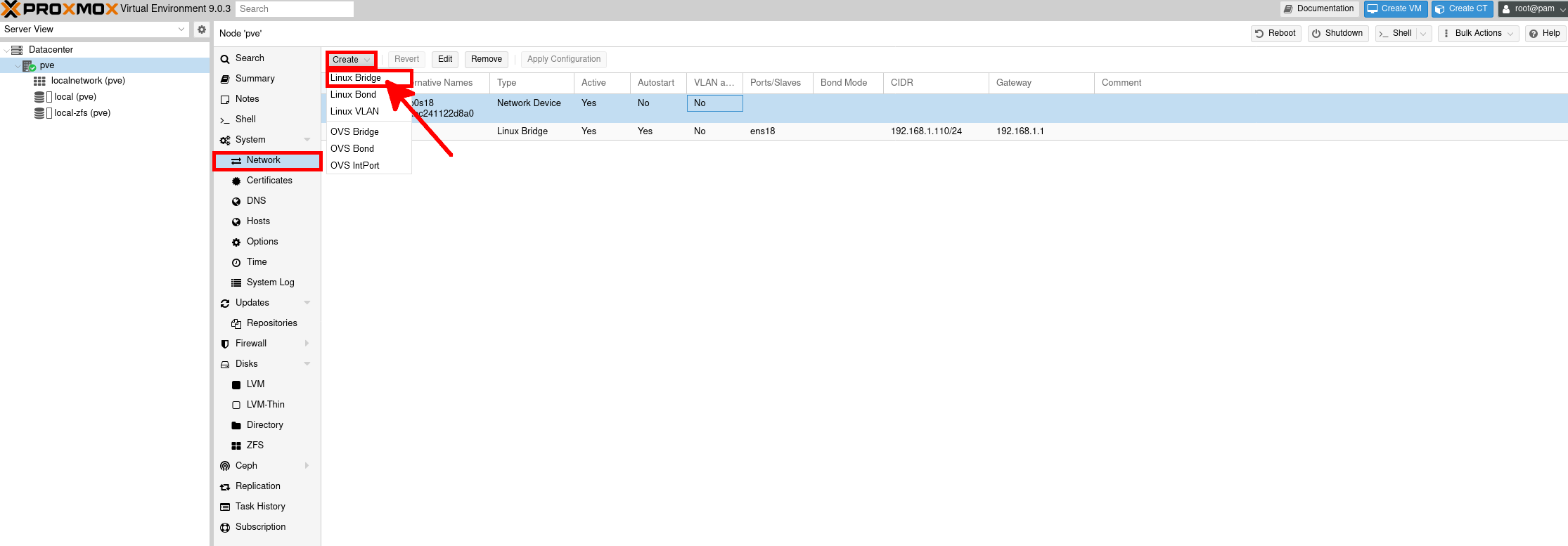
- Specify the physical network interface you want to associate with the bridge, then click Create:
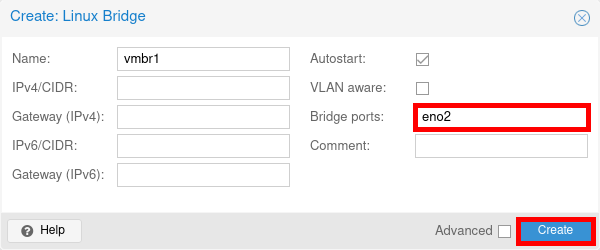
Now that your Proxmox VE 9 server is up and running, you may want to go further: discover how to create your first virtual machines, or learn to set up the official Proxmox Backup Server to secure your infrastructure.